Do you often find yourself overwhelmed with a long list of tasks and activities that need to be done? Do you struggle to manage your time effectively and find yourself procrastinating on important tasks? If so, using a daily timetable may be the solution you’ve been looking for. A daily timetable provides a structured plan for your day, helping you organize tasks, prioritize activities, and manage your time effectively. By creating a predictable routine and minimizing procrastination, a daily timetable can lead to increased productivity and reduced stress.
This article will explore the benefits of using a daily timetable and provide tips for successful implementation.
What is a Daily Timetable?
A daily timetable is a tool that allows you to plan and organize your day in a structured manner. It typically consists of a template with time slots or sections for each hour or half-hour of the day, allowing you to allocate specific tasks or activities to each time slot. This helps you visualize your day and ensures that you have a clear plan of action.
A daily timetable can be customized to suit your individual needs and preferences. You can include sections for work, personal tasks, exercise, meal times, and any other activities that are important to you. It provides a visual representation of your day, allowing you to see how your time is allocated and make adjustments as needed.
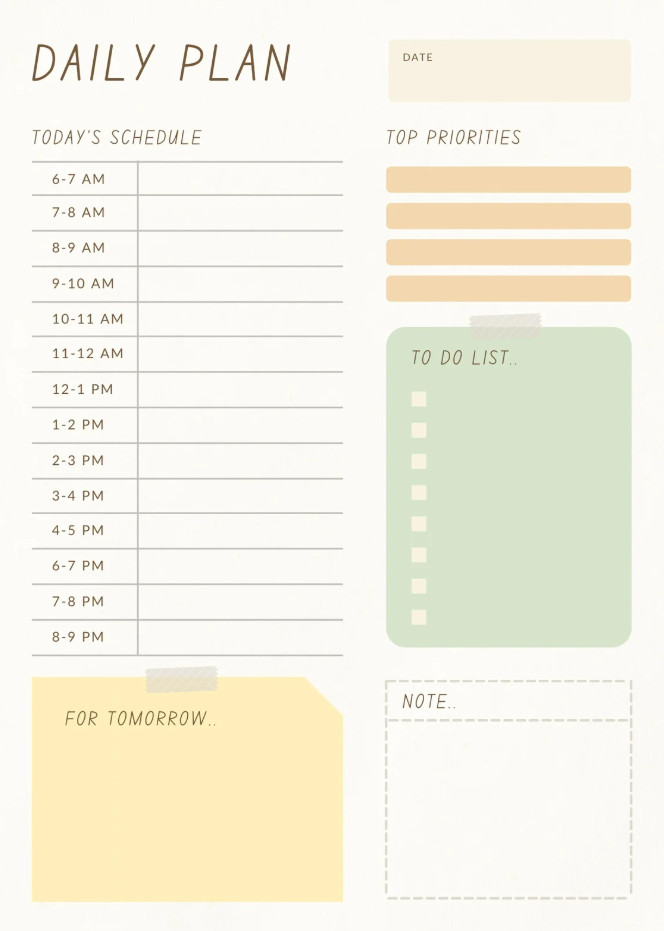
Why Use a Daily Timetable?
Using a daily timetable offers numerous benefits for managing your time effectively and reducing stress. Here are some of the key reasons why you should consider incorporating a daily timetable into your routine:
1. Increased Productivity
A daily timetable helps you prioritize tasks and allocate specific time slots for each activity. By having a clear plan of action, you can focus on one task at a time and avoid wasting time on unimportant or non-essential activities. This increased focus and productivity can lead to accomplishing more in less time.
2. Reduced Stress
When you have a structured plan for your day, you know exactly what needs to be done and when. This reduces the feeling of overwhelm and helps you stay organized. By following a predictable routine, you can minimize the chances of last-minute rush or forgetting important tasks, resulting in reduced stress levels.
3. Better Time Management
A daily timetable allows you to allocate specific time slots for each task or activity, helping you manage your time more effectively. It prevents you from spending excessive time on one task and neglecting others. By having a clear plan, you can make the most of your available time and ensure that all important tasks are completed.
4. Improved Focus and Concentration
When you know exactly what you need to do and when, it is easier to stay focused and avoid distractions. A daily timetable provides a visual reminder of your tasks and helps you stay on track. This improved focus and concentration can lead to better quality work and increased efficiency.
5. Enhanced Organization
A daily timetable helps you stay organized by providing a clear structure for your day. It allows you to prioritize tasks, allocate time for each activity, and ensure that nothing falls through the cracks. By staying organized, you can avoid the stress and frustration that comes with forgetting important tasks or feeling overwhelmed by a chaotic schedule.
How to Create and Use a Daily Timetable
Creating and using a daily timetable is simple and can be customized to suit your individual needs. Here are the steps to get started:
1. Choose a Template
There are numerous daily timetable templates available online. Choose a template that fits your preferences and download it to your computer or print it out.
2. Customize the Template
Customize the template to suit your needs. Add sections for work, personal tasks, exercise, meal times, or any other activities that are important to you. Include time slots or sections for each hour or half-hour of the day.
3. Prioritize Tasks
Prioritize your tasks for the day. Determine which tasks are most important and allocate specific time slots for them in your timetable. Consider the urgency and importance of each task and plan accordingly.
4. Allocate Time for Breaks
It is important to include breaks in your daily timetable to rejuvenate and recharge. Allocate specific time slots for breaks and use this time to relax, stretch, or engage in activities that help you de-stress.
5. Stick to the Timetable
Once you have created your daily timetable, commit to sticking to it as much as possible. Follow the time slots and complete tasks as planned. This will help you develop a predictable routine and minimize the chances of procrastination or wasting time.
6. Review and Adjust
Regularly review your daily timetable to assess its effectiveness. Evaluate whether you can complete tasks within the allocated time slots and make adjustments as needed. Be flexible and open to changes to ensure that your timetable continues to meet your needs.
Examples of Daily Timetables
There are various examples of daily timetables available online that you can use as inspiration or directly implement. Here are a few examples:
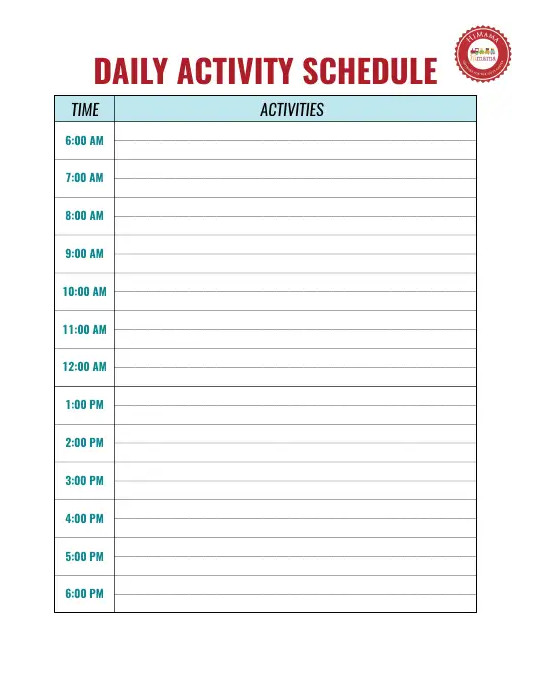
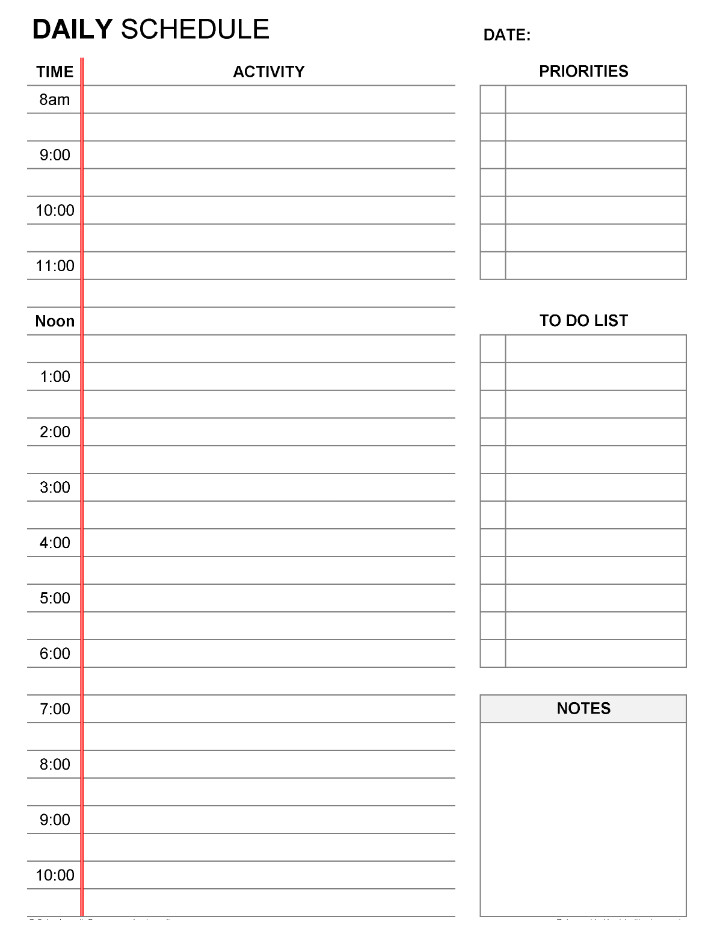
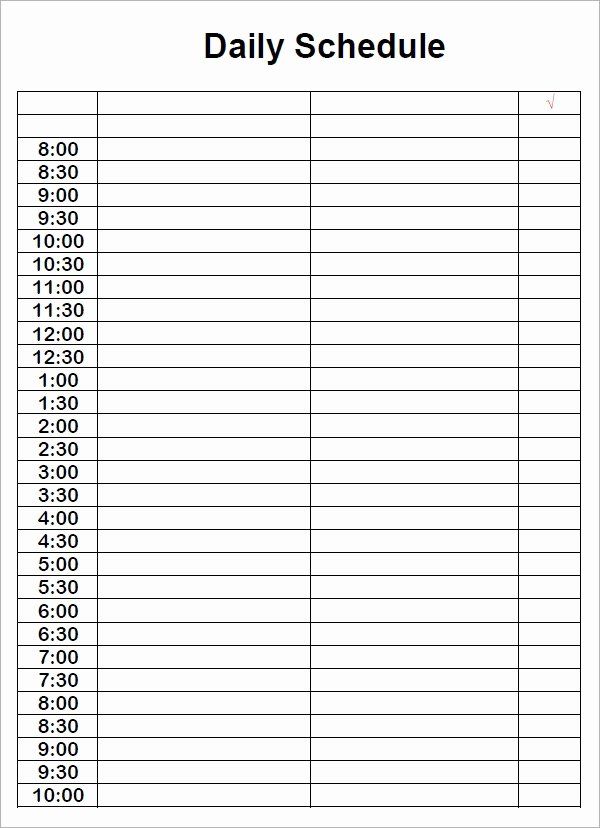
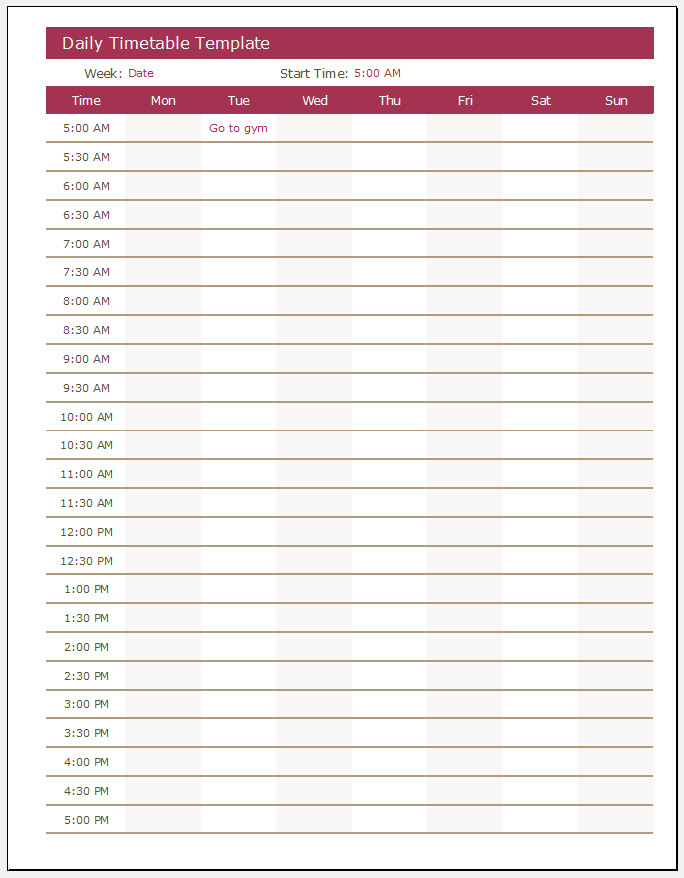
Tips for Successful Implementation
Here are some tips to help you successfully implement a daily timetable:
- Be realistic: Ensure that your timetable is realistic and achievable. Avoid overloading your schedule with too many tasks, as this can lead to stress and overwhelm.
- Allow flexibility: While it is important to stick to your timetable as much as possible, allow room for unexpected events or changes in plans. Be flexible and adjust your schedule when necessary.
- Take breaks: Remember to include breaks in your timetable to rest and recharge. Use this time to relax, engage in activities you enjoy, or simply take a short walk.
- Review and adjust: Regularly review your daily timetable to assess its effectiveness. Make adjustments as needed to ensure that it continues to meet your needs and priorities.
- Stay committed: Developing a new routine takes time and effort. Stay committed to your daily timetable and give yourself time to adjust. With consistency, it will become a natural part of your daily life.
By using a daily timetable, you can create a structured plan for your day, prioritize tasks, and manage your time effectively. This can lead to increased productivity, reduced stress, and a more organized and fulfilling life. Give it a try and experience the benefits for yourself!
Daily Timetable Template – Download